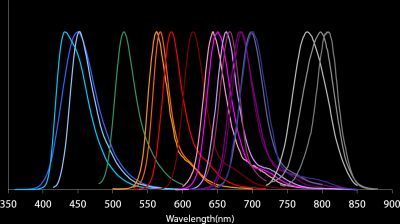Numerous vaccine studies have exploited the adjuvant activity of chitosan, but few have explored the mechanism of action. Recently, Wang and colleagues from the China National Vaccine and Serum Institute, gained some insights into the MOA from in vitro and in vivo assays using a HBV vaccine model system.
The authors labeled HBV antigen with CF™680R succinimidyl ester, a near-infrared dye, and measured nasal residence time in mice by in vivo imaging. Results for the chitosan-encapsulated HBV antigens showed that the positive charges of the chitosan had a strong adhesive effect that prolonged its residence in the nasal cavity and facilitated sustained immune stimulation. Chitosan also enhanced the uptake of the HBV antigens by dendritic cells and promoted their maturation.
The subcellular localization of HBV antigen was determined after it was labeled with the fluorescent dye, CF™488A succinimidyl ester. Fluorescence microscopy analysis showed that chitosan readily dissolved in the acidic endosomal environment of antigen presenting cells, allowing endosomal escape and facilitating the typical antigen processing and presentation on MHC class I molecules, but also allowing cross-presentation by MHC class II.
Murine vaccination studies showed that the intranasal delivery of chitosan particles induced significantly higher levels of both cellular and mucosal immunity, when compared with the same HBV antigen delivered by injection in alum adjuvant.
To read the original article, click here.
Wang, Zhi-Biao, Pu Shan, Su-Zhen Li, Ya Zhou, Xia Deng, Ji-Lai Li, Yu Zhang, Jin-Shuang Gao, and Jing Xu. “The mechanism of action of acid-soluble chitosan as an adjuvant in the formulation of nasally administered vaccine against HBV.” RSC Advances, 2016,6, 96785-96797. doi: 10.1039/C6RA14419E.

Biotium has an extensive list of reactive CF™ dyes spanning the visible and near-infrared spectrum. We also have a large selection of CF™ dye primary and secondary antibody conjugates, and user-friendly Mix-n-Stain™ kits for labeling antibodies and small ligands. For more information on our CF™ dyes, click here.

